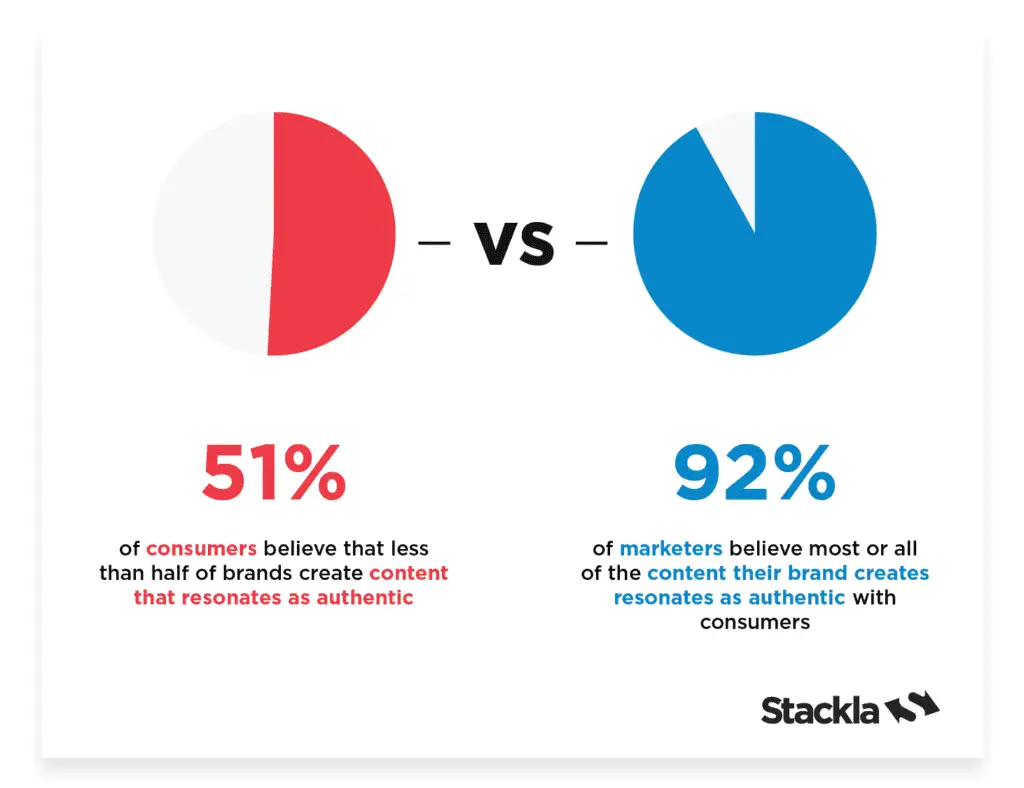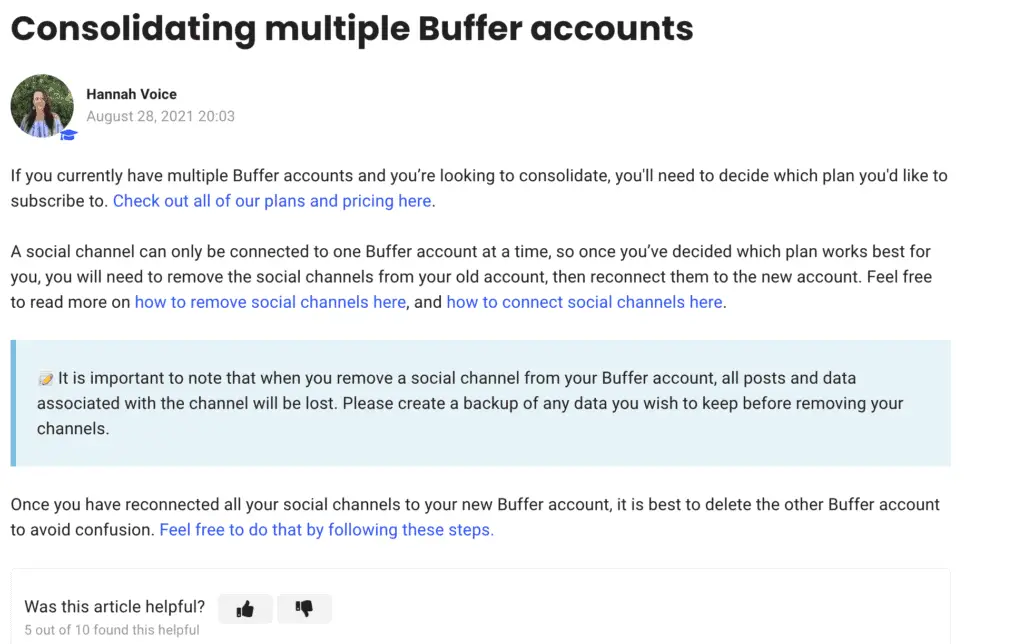There’s a lot of talk these days about authenticity in marketing. There were 2.2 billion searches on “know like and trust”!

But what does authenticity look like, and how can you make sure your marketing is authentic?
There’s no single answer to that question, because authenticity means something different to everyone. For some people, it might mean being true to your brand identity and staying true to your core values. For others, it might mean creating marketing messages that are genuine and relatable.
Let’s Face it. Distrust is the Default
As marketers, we’re always talking about listening to customers and serving our customers. But how well are we doing?
A 2021 Gallup Survey shows that business related professions rated significantly lower than other professions.

I’m not sure if this is good news or bad news, but trust is declining across many of the most trusted professions.

Consumers Crave Authenticity in Marketing
With all this doubt and distrust, it’s no surprise that customers are seeking for honesty from businesses. A Cohn & Wolfe survey showed that 63 percent of consumers interviewed in 12 global markets would buy from and recommend a company they considered authentic over its competitors.
None of this is surprising. After all, you’re a consumer too, and you can see BS from a million miles away.
Marketers Overvalue Their Authenticity
A Social Media Today survey found that less than half of all consumers actually BELIEVE the information that marketers are feeding them.

As an entrepreneur, business owners, or marketer, you have to embrace the fact that customers see through your BS! The idea that you have to impress consumers with big words or saying the right thing is simply WRONG.
Why Authentic Marketing Works
Authentic marketing works because it’s honest and trustworthy. When customers feel like they’re being communicated with honestly and without any hidden agendas, they’re much more likely to respond positively.
Additionally, when marketing professionals practice authentic marketing, it builds trust between the company and the customer. This can lead to more long-term loyalty and a better reputation
What Does It Mean to Practice Authenticity in Marketing?
Authenticity in marketing means being visibly true to your brand identity and core values. It means creating marketing messages that are genuine and relatable. It means putting the customer first and listening to what they have to say.
The key word in this definition is “VISIBLY” — and that means that anyone (customer or employee) would experience your brand values within seconds or minutes of engaging with your organization.
This can be incredibly scary to any sized business, especially those businesses with employees or multiple locations because they have more people and more moving parts.
Ways to Do Marketing in an Authentic Way
Let’s be clear about something. Authenticity is NOT a marketing strategy. Authenticity is a choice, it’s a way of being. But what does that look like?
In this section, I’m going to outline specific things you can do to build brand authenticity.
Make integrity and congruency a core value
Without integrity nothing works
We’ve come to look at “integrity” as meaning honest. But it actually means “whole or complete” and has nothing to do with any kind of moral standing. For example, a table has integrity if it has a top and some legs to keep it steady. If your table doesn’t have top or is missing a leg, then it isn’t whole and hence, doesn’t have integrity.
To make integrity a whole value in your business, you simply have to be who you are, do what you say and show the documentation or social proof.
Don’t be afraid to take a stand
Your target audience wants and expects a corporate brand to take a stand on everything from how they implement their brand promise.
Your content marketing; it’s tone, voice, and topic choices; everything you do and say as a business needs to reflect the values that are important to your target market.
Be vulnerable
This one is hard for a lot of businesses because they feel like they need to put up a “strong” front. But being vulnerable shows that you’re human. It opens up the door for customers to relate to you and your brand.
There are a lot of ways to be vulnerable in marketing. You can share your story, your mission, or even your values. When you’re vulnerable, you’re also building trust.
Be present
This is probably the most important thing you can do to build brand authenticity. Be available and accessible to your customers. Listen to what they’re saying and address their concerns.
Make sure you’re responsive on social media and that you have a customer service team in place to help resolve any issues that come up.
Stop sugar coating everything in your communication
Language plays a big role in authentic marketing. Avoid using vague corporate speak. Instead, use simple language that clearly communicates where your brand stands on any issue.
You don’t have to have an opinion on every issue. Use your organization’s mission to guide you.
Be clear on your values and visibly practice them
Too many companies create mission, vision, and values statements that just sit there. It’s hard to admit, but these statements start out with promise, but end up being vague and meaningless as the business grows.
To be successful, you have to convert those values and beliefs intro VISIBLE artifacts in your business.
For example:
Chick-fil-a, and Hobby Lobby are very vocal about their Christian values and they are closed on Sundays.

Nike took a lot of flack for their Colin Kaepernick commercial as they continue to show people all the different ways they can “Just Do It”

Both of these brands didn’t shy away from sharing their beliefs in order to connect with belief driven buyers.
Embrace Vale: Be open about your products and services
Consumers are interested in how your products and services are made and developed.
With costs and prices on the rise, brands that are open about the level of quality and effort that goes into their products and services.
In fact, if your brand’s values impact how you work, being open about any extra effort, work, etc. that’s involved in making sure that your customers get what they paid for will work in your favor.
Employ people and train them on your brand story and values
Employees are one of the most often ignored marketing channels for any business. Many consumers will develop an opinion about your company based on their experience with your employees.
Before you go out and hire employees, pull your brand story together; What are you committed to? What can people count on your for? Why do you deliver your products and services the way you do.
If you want employees to communicate your brand message, you need to know what your brand image is, so that you can tell that story and show future employees how your brand’s authenticity is visible in your organization.
Show off your operations
One easy way to show off your brand authentically is to make your operations visible.
If you’ve been to a restaurant that shows off their kitchen, you already know the power of showing off how your product is put together.
Even service organizations have an opportunity to show off how your “sausage is made”. For example, Ryan Levesque, author and creator of Quiz Funnels, recently did a webinar where he took his students behind the scenes of their studio.
Freshen your FAQ
Your Frequently Asked Questions page is an often ignored part of your marketing efforts to feature your brand voice.
Currently, a lot of big brands feel “free enough” to let loose and answer common questions in a personal way that leaves their new customers and existing customers feel like they are talking to a person.
But smaller, more accessible brands like yours can do the same thing. It doesn’t have to be overly creative, simply speaking directly to your customer using words they understand will do the trick.
Buffer is a great example:

Buffer’s tone here is what I’d call “normal and expected” not funny or flip, but informative.
But here’s what makes their FAQ stand out — they feature the author of the question and answer. You might worry that this person is going to get flooded with questions, but that’s not likely to happen, Instead, the reader feels like there is a face associated with the answer. And, that’s enough.
User Generated Content (UGC)
With consumer trust at an all-time low, one subtle way to build a deeper level of trust is to feature your customers in your marketing. This is called user generated content.
Consumers today would rather see other loyal followers using your product or service. Not only that, but consumers tend to create more creative and engaging content.
Benefits of Authenticity in Marketing
Increased customer retention and brand loyalty
“According to a 2021 survey conducted by The Org in the US, 84% of US Millennials say that they would be more loyal to a brand if they knew it was transparent, and 37% believe that a company’s values and culture are the most important facets of transparency. Additionally, 38% of respondents said they believed their place of work ‘had shared a public commitment towards transparency”
Amplify Brand Awareness
Consumers nowadays conduct extensive research before deciding on products and services.
But this research goes beyond comparing features and pricing. They look at social media posts, reviews and even marketing campaigns to gage where your company stands.
Consumers are weeding through generic marketing or fake news and looking at a variety of channels to see if you practice what you preach. In essence, your goal is to generate sheer volume of content that are consistent with an authentic experience.
Final Thoughts
Authenticity is key in any business, but it’s especially important in marketing. Consumers are savvy and can see through generic or fake content quickly. If you’re genuine with your customers and show them the inner workings of your company, they’re more likely to be loyal and return customers.